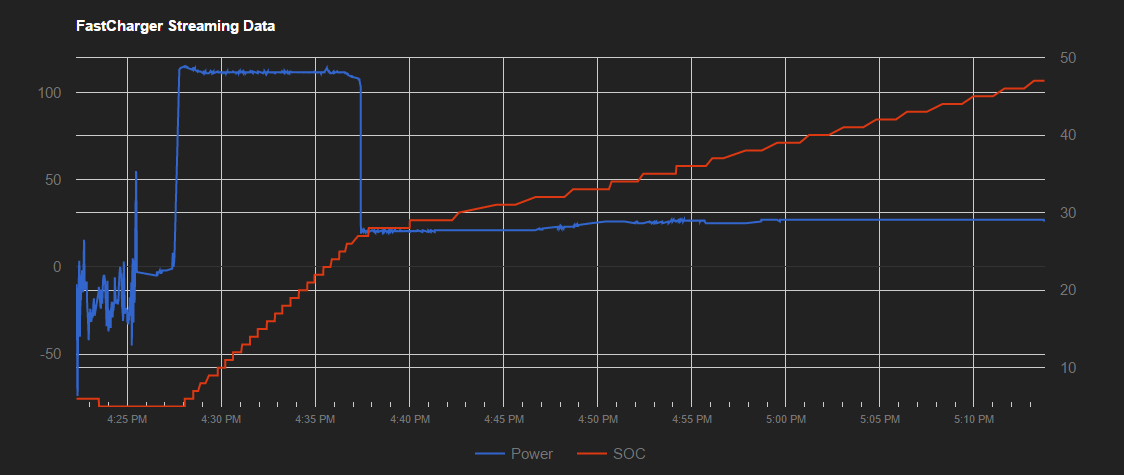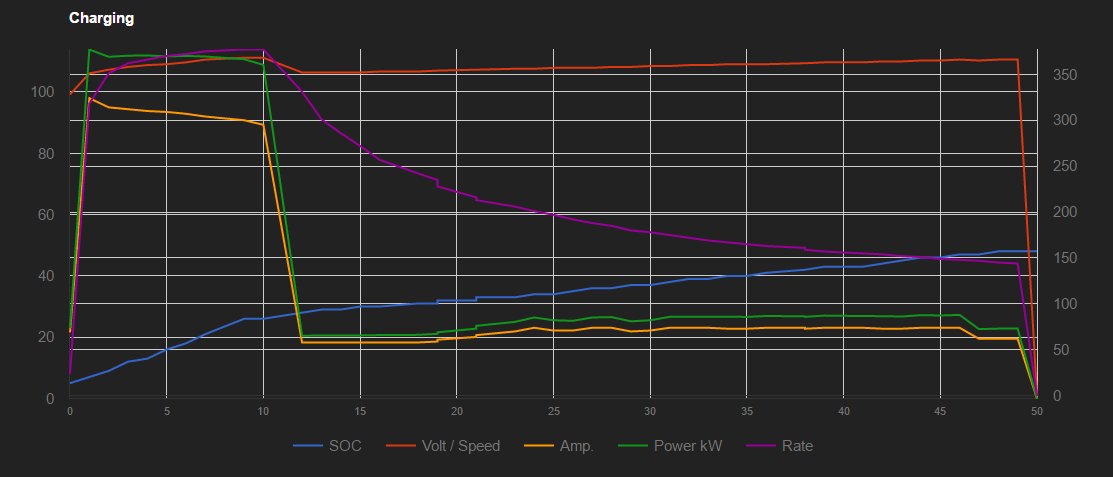So this just happened to me yesterday at the Woodbridge, VA supercharger and I immediately recalled this thread. I just reread all the posts and many of the aspects of my charging session were similar:
- Hot day (low 90's), as well as somewhat humid.
- Low initial SOC (<10%)
- Had been driving at highway speeds prior to plugging in
- Only car at the site
Once we started charging I immediately walked away (wife needed the facilities lol), and only when I looked at the phone a few minutes later did I see I was pulling 72A. I did the calcs quickly and realized I was only only about 25.6KW. At that time I was seated in a restaurant a bit away, and didn't go check anything, as I was only a short distance from home and knew I'd be ok. But I monitored, and the current never rose above 74A.
When I went back to the car:
- I was still the only one there
- The thermal management on the car was running strong (although I had also used the app to pre-cool the car with the HVAC)
- The blower on the supercharger cabinet was running (interestingly it appears that most of them were running, despite only one car plugged in)
I did notice that the screens on the supercharger cabinets may have had a little debris in them, but it didn't appear too major. This is also a relatively "young" site.
I surmised this was a heat related issue with the pack in my car. Although I've charged in similar hot weather before, and didn't have this issue. This location is only about 40 miles fro my house (a bit less as the crow flies), and also haven't had the issue here.
Odd. I wish I would have called Tesla.
- Hot day (low 90's), as well as somewhat humid.
- Low initial SOC (<10%)
- Had been driving at highway speeds prior to plugging in
- Only car at the site
Once we started charging I immediately walked away (wife needed the facilities lol), and only when I looked at the phone a few minutes later did I see I was pulling 72A. I did the calcs quickly and realized I was only only about 25.6KW. At that time I was seated in a restaurant a bit away, and didn't go check anything, as I was only a short distance from home and knew I'd be ok. But I monitored, and the current never rose above 74A.
When I went back to the car:
- I was still the only one there
- The thermal management on the car was running strong (although I had also used the app to pre-cool the car with the HVAC)
- The blower on the supercharger cabinet was running (interestingly it appears that most of them were running, despite only one car plugged in)
I did notice that the screens on the supercharger cabinets may have had a little debris in them, but it didn't appear too major. This is also a relatively "young" site.
I surmised this was a heat related issue with the pack in my car. Although I've charged in similar hot weather before, and didn't have this issue. This location is only about 40 miles fro my house (a bit less as the crow flies), and also haven't had the issue here.
Odd. I wish I would have called Tesla.
Last edited:




